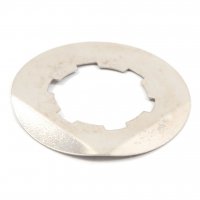IT LIVES!!!
Well, Sort of. I received the carb boots Jim recommended. What A Difference! Slipped in, No Trouble!!! Cursing myself for all the hours wasted trying to fit the Chinese crapl Now I have to wonder why some of you have had trouble getting your carbs mounted unless you're also using the Chinese junk... BTW, Thanks Jim for the tip! I'll bitch about the cost but it was well worth the expense!!!
Actually, I think the Chinese boots were designed for a different carb. Anyway, I hooked everything up turned the key, pulled the choke, hit the starter and no start. Seemed like one cylinder was trying but it wasn't enough for me to tell which one. Kept grinding for about 30 seconds till the left carb began spewing gas. At that point I was seriously thinking of a bonfire. Fortunately, I didn't have any matches close by. Frustrated, I threw my tools in the box and stalked back to the house. Not sure what I'd do tomorrow but done for the day.
Next day the sun was shining so I took a chance. Tapped the left carb bowl just in case the float was stuck, turned the key, etc. but pretty much the same thing happened. Thought I'd check the spark so I pulled the plugs one at a time and laid them up against the motor. I didn't see any spark but the right side plug wire came apart in my hand. I pushed it back together and just for grins pushed on the left side wire in case it wasn't making a good connection. Hit the starter button and...
Hot Damn! it fired up! Quickly died since I don't yet have a throttle cable but I worked it manually and the damn thing runs!!! For the first time in 17 years...I let it run for a couple of minutes to see if the left carb would spew gas but it didn't.
OK, it's running but not so great. Wants to die if I let it idle. I have not yet synchronized the carbs but will do that pretty soon. I have the left carb boot spigot connected to the extra spigot on the petcock but didn't have anything to cover the spigot on the right carb boot. It was spitting out some gas. Not a lot but definitely something coming out of there. Pretty sure that's not right so I put my finger over the spigot and RPM instantly dropped by about 1K. Wonder why that is? I don't understand the science behind this phenomenon. Am I correct in how the boots are supposed to be connected? I know you connect them together for synchronization. I didn't think to try disconnecting the other boot to see if that would increase RPM...
So now I will have to find a cap for the right side boot. Then unless someone has some ideas I guess I'll try to increase the idle speed so it will idle. Then manometer synchronizing.
One other strange thing: I pulled off the counter sprocket because I wanted to replace the seal there and on the clutch rod. When I did I found that the locking washer was BEHIND the sprocket. I thought DFO! (or DPO, whichever you prefer). But then upon closer inspection I saw that the counter sprocket shaft does not protrude enough to accept the locking washer. Guessing the PO put on an aftermarket sprocket that's thicker than stock, then didn't know what to do with the washer. Seems odd that the sprocket would be thicker than stock. I could understand if it was stock with 520 chain & wanting to put on 530 but I'm pretty sure it was 530 stock.
So, while I'm still a ways from being able to take it out on the road I'm glad I didn't have to torch it. Since I live in a heavily forested area with a dry climate I'm pretty sure my neighbors and local fire department would not be at all happy with me if I did that.


